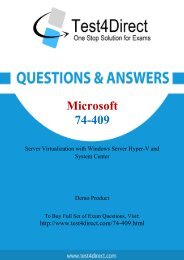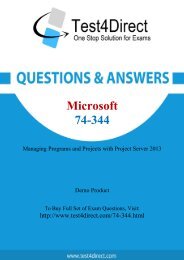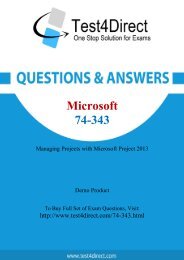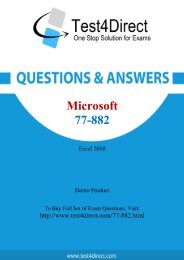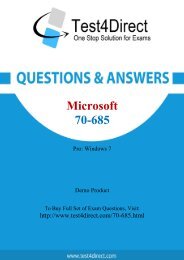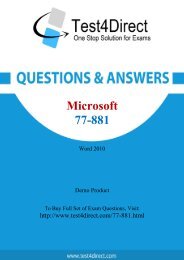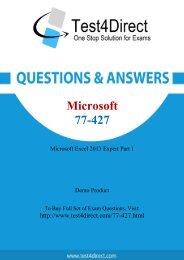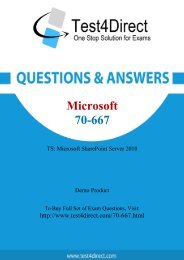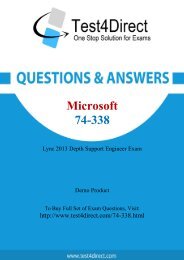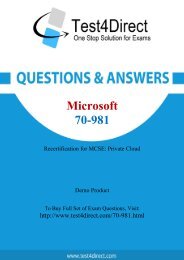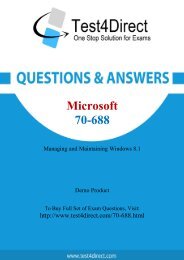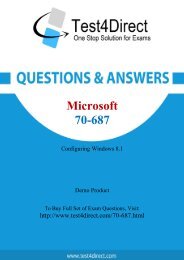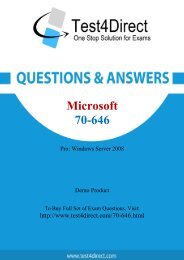You also want an ePaper? Increase the reach of your titles
YUMPU automatically turns print PDFs into web optimized ePapers that Google loves.
C. AddObject<br />
D. ApplyCurrentValues<br />
Question: 6<br />
Answer: C<br />
Explanation:<br />
ObjectContext.AddObject() Call AddObject on the ObjectContext to add the object to the object<br />
context.<br />
Do this when the object is a new object that does not yet exist in the data source.<br />
ObjectContext.Attach() Call Attach on the ObjectContext to attach the object to the object context.<br />
Do this when the object already exists in the data source but is currently not attached to the context.<br />
If the object being attached has related objects, those objects will also be attached to the object<br />
context.<br />
Objects are added to the object context in an unchanged state.<br />
The object that is passed to the Attach method must have a valid EntityKey value.<br />
If the object does not have a valid EntityKey value, use the AttachTo method to specify the name of<br />
the entity set.<br />
ObjectContext.AttachTo() Call AttachTo on the ObjectContext to attach the object to a specific entity<br />
set in the object context or if the object has a null (Nothing in Visual Basic) EntityKey value.<br />
The object being attached is not required to have an EntityKey associated with it. If the object does<br />
not have an entity key, then entitySetName cannot be an empty string.<br />
ApplyCurrentValues() method is used to apply changes that were made to objects outside<br />
the ObjectContext, such as detached objects that are received by a Web service.<br />
The method copies the scalar values from the supplied object into the object in the ObjectContext<br />
that has the same key.<br />
You can use the EntityKey of the detached object to retrieve an instance of this object from the data<br />
source.<br />
You use Microsoft Visual Studio 2010 and Microsoft .NET Framework 4 to create an application. The<br />
application connects to a Microsoft SQL Server database. The application uses the ADO.NET Entity<br />
Framework to model entities. The database includes objects based on the exhibit. (Click the Exhibit<br />
button.)



